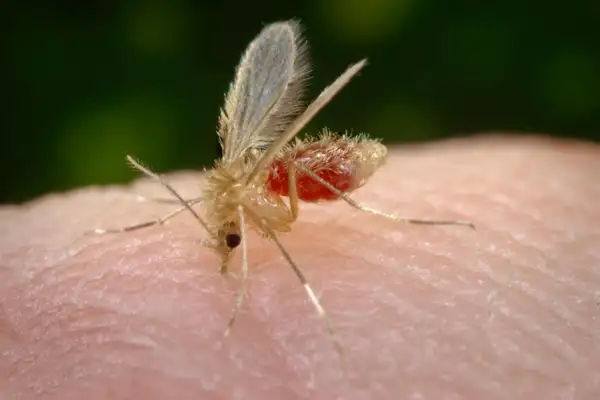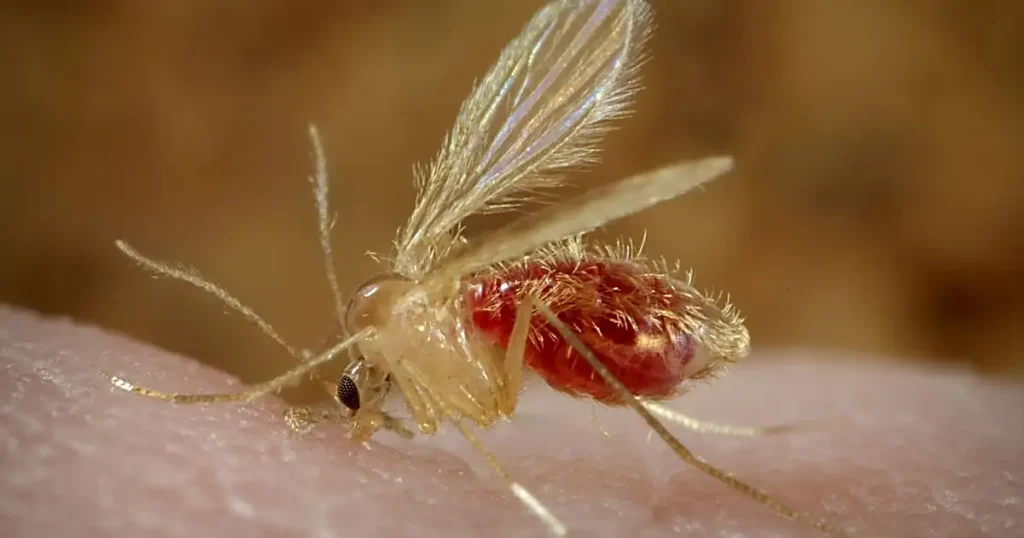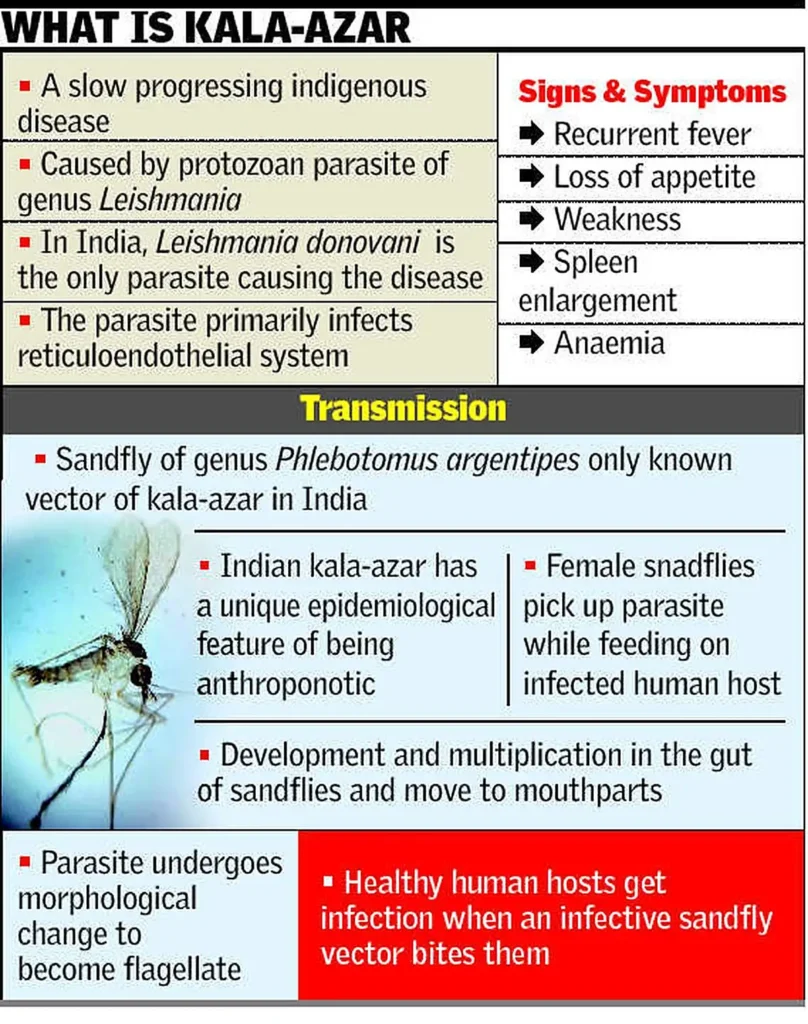India recently reported less than 1 case per 10,000 population of Kala Azar across all its blocks.
About the Kala Azar:
- The Kala Azar or Visceral leishmaniasis, is a slow-progressing disease prevalent in tropical or sub-tropical areas, caused by the protozoan parasite of genus Leishmania.
- It is transmitted by infected female phlebotomine sandflies.
- It is colloquially known as the “black disease” due to the greyish or blackish discoloration of the skin during infection.
- The disease’s symptoms include fever, weight loss, swelling of the spleen and lymph nodes, anaemia, and liver enlargement, with an incubation period ranging from about 10 days to several months.
- If untreated, it proves fatal in 95% of cases.
- The parasite targets the reticuloendothelial system, particularly affecting the bone marrow, spleen, and liver.
- A condition known as Post Kala-azar Dermal Leishmaniasis (PKDL) may develop in individuals cured of Kala Azar, manifesting as dermal lesions up to 2 years after the initial infection.
Ref: Source
| UPSC IAS Preparation Resources | |
| Current Affairs Analysis | Topperspedia |
| GS Shots | Simply Explained |
| Daily Flash Cards | Daily Quiz |





